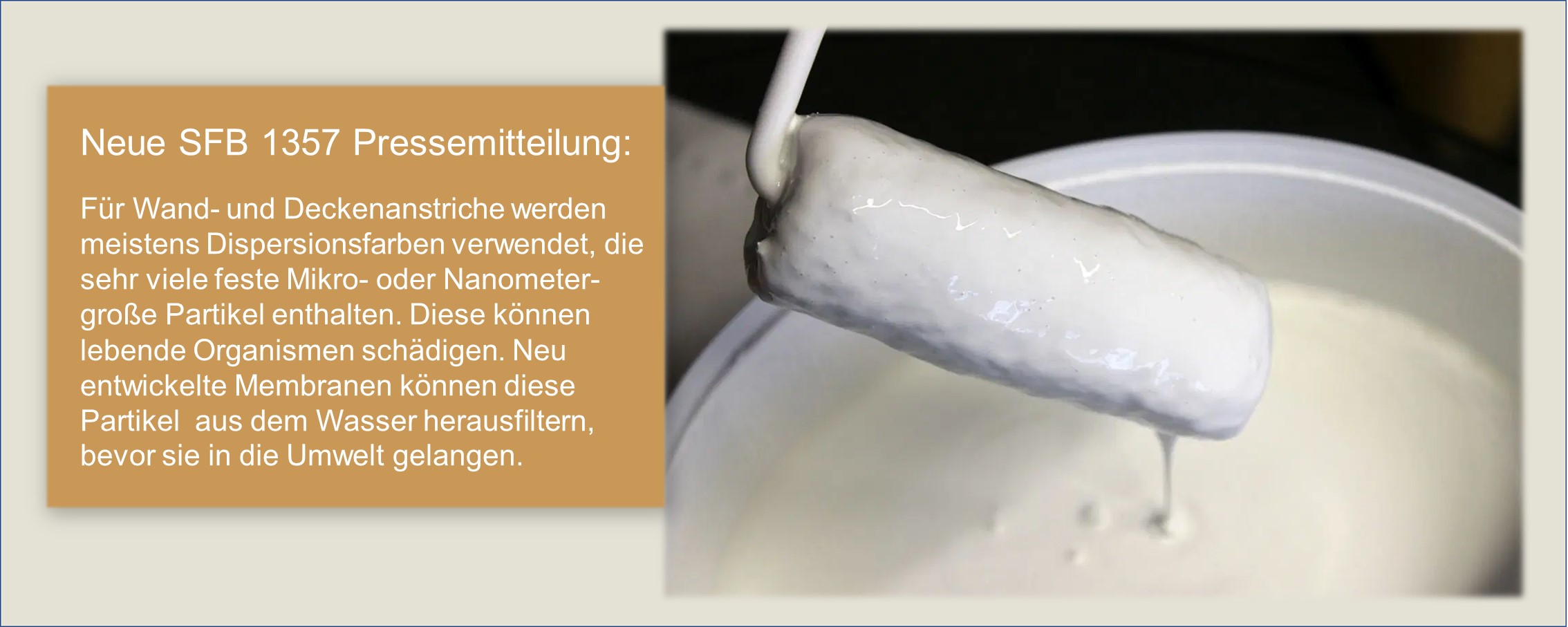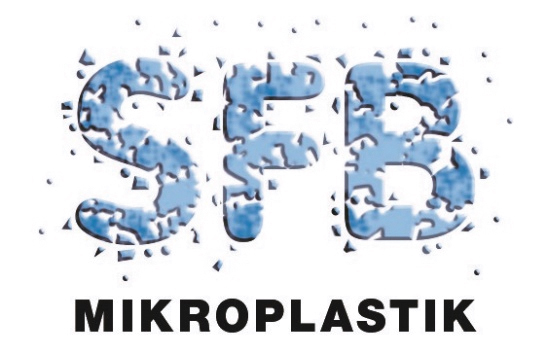News
Neue SFB 1357 Pressemeldung: Partikel aus alltäglichen Wandfarben können lebende Organismen schädigen – Neuartige Membran zeigt hohe Filterleistung
27.08.2022

Wir freuen uns, eine Pressemitteilung der Universität Bayreuth zu der unten stehenden Studie bekannt zu geben:
Die Pressemitteilung der UBT finden Sie hier: https://www.uni-bayreuth.de/pressemitteilung/Dispersionsfarben
Partikel aus alltäglichen Wandfarben können lebende Organismen schädigen – Neuartige Membran zeigt hohe Filterleistung
Für Wand- und Deckenanstriche werden in Haushalten meistens Dispersionsfarben verwendet. Ein interdisziplinäres Forschungsteam der Universität Bayreuth hat jetzt zwei typische Dispersionsfarben auf ihre chemische Zusammensetzung hin analysiert und darin sehr viele feste Partikel entdeckt, die nur wenige Mikro- oder Nanometer groß sind. Untersuchungen an biologischen Testsystemen ergaben, dass diese Partikel lebende Organismen schädigen können. Mit einer neuartigen, an der Universität Bayreuth entwickelten Membran lassen sich diese Partikel aus dem Wasser herausfiltern, bevor sie in die Umwelt gelangen.
Die Autor*innen der Studie sind: Ann-Kathrin Müller, Julian Brehm, Matthias Völkl, Valérie Jérôme, Christian Laforsch, Ruth Freitag, Andreas Greiner.
"Disentangling biological effects of primary nanoplastics from dispersion paints’ additional compounds"
DOI: https://doi.org/https://doi.org/10.1016/j.apsoil.2022.104714
veröffentlicht in: Ecotoxicology and Environmental Safety
Abstract: Microplastic particles (MP) and nanoplastic particles (NP) as persistent anthropogenic pollutants may impact environmental and human health. A relevant potential source of primary MP and NP is water-based dispersion paint which are commonly used in any household. Given the worldwide high application volume of dispersion paint and their diverse material composition MP and NP may enter the environment with unforeseeable consequences. In order to understand the relevance of these MP and NP from paint dispersion we investigated the components of two representative wall paints and analyzed their composition in detail. The different paint components were then investigated for their impact on the model organism Daphnia magna and on a murine cell line. Plastic NP, dissolved polymers, titanium dioxide NPs, and calcium carbonate MPs demonstrated adverse effects in both biological test systems, indicating detrimental consequences of several typical components of wall paints upon release into the environment. The outcome of this study may form the basis for the evaluation of impact on other organisms, environmental transport and impact, other related technical materials and for the development of strategies for the prevention of potential detrimental effects on organisms.
und
Ann-Kathrin Müller, Zhi-Kang Xu, Andreas Greiner.
"Filtration of Paint-Contaminated Water by Electrospun Membranes"
DOI: https://doi.org/10.1002/mame.202200238
veröffentlicht in: Macromolecular Materials and Engineering
Abstract: Micro- and nanosized plastics as persistent anthropogenic pollutants have attracted more and more attention in recent years. A source of nanoparticles is, for example, water-borne dispersion paint, which consists of a variety of different materials with potential adverse effects on living systems. Therefore, a rising challenge becomes apparent to investigate remediation strategies for environmental media. This problem is addressed by utilizing electrospun membranes for filtration applications because of their outstanding properties, such as their high surface-to-volume ratio and ease of functionalization. The electrospun membranes are able to successfully filter different paint components, such as titanium dioxide and polyacrylate nanoparticles, as well as dispersed polymers and calcium carbonate microparticles. Besides the known size-exclusion mechanism, the membranes featured extraordinary properties, such as effective separation of components smaller than the pore size of the electrospun membranes. This property occurs due to the fiber surface functionalization and enables not only filtration of nanosized or dissolved mater at high filtration efficiencies up to 100% but also at a very low operating pressure. This combination of filter material properties cannot be achieved by conventional nanofiltration membranes and thus, demonstrates the high potential of electrospun membranes for the application in filtration for future environmental pollutants.

